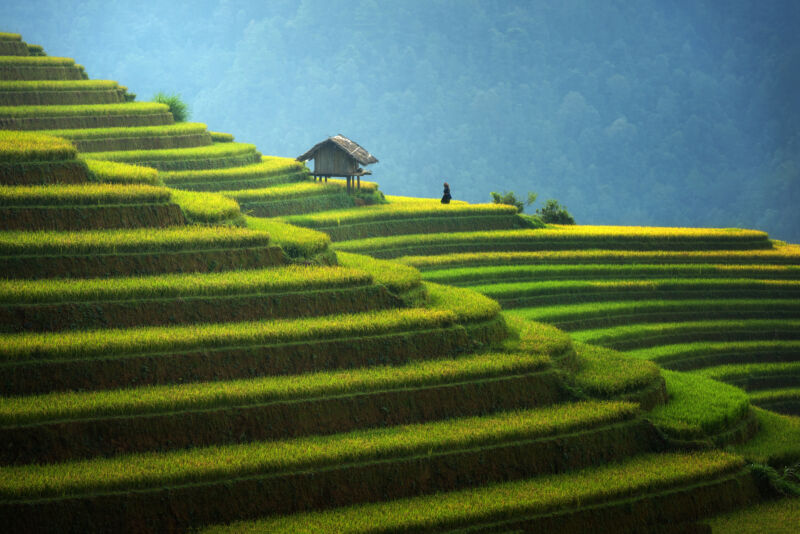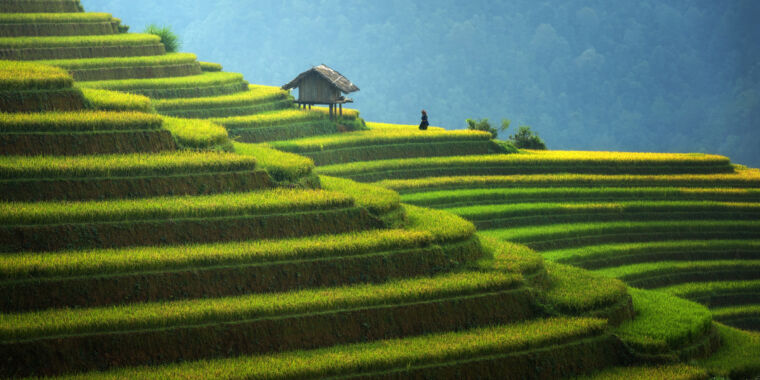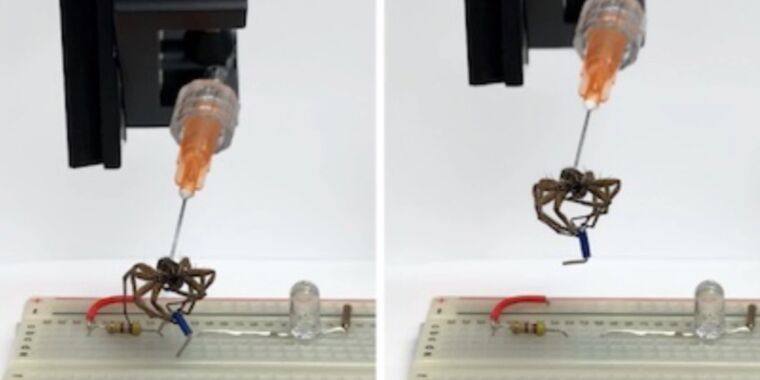
Nitrogen fertilizer is made from natural gas. Extracting and burning natural gas is harming life on our planet, so we should probably stop doing it (or at least try to cut back considerably). But food crops, like all plants, need that nitrogen. It’s quite the conundrum, especially since the human population relying on those crops is slated to grow over the next few decades, while the acreage of arable land is slated to drop.
In response, genetic engineers in China have been developing crops that can thrive with less nitrogen, and they made a strain of rice with a yield that’s 40 to 70 percent higher than that of regular rice. It has more grain per branch, each grain particle is bigger and denser, and the plants flowered earlier. Most breeding methods currently used in cereal crops can only generate a yield increase of less than 1 percent, so this is a pretty big deal.
One gene alters many
The scientists started by looking at proteins called transcription factors, which often control the expression of a set of genes that are often involved in varying aspects of a single physiological function. In this case, the focus was on transcription factors that were already known to regulate photosynthesis.
To find the perfect target, the researchers screened a set of 118 transcription factors previously identified to regulate photosynthesis in rice and maize to find any that were also upregulated in response to light and low levels of nitrogen. When they found one, they generated transgenic rice lines that made lots of it. Overexpressing a transcription factor like this instead of the individual genes it controls is like demanding to speak to the manager instead of getting bounced around between assorted customer service reps in different departments.
The resulting rice plants were put in fields with different environmental conditions: temperate fields near Beijing, tropical fields in Hainan province, and subtropical fields in Zhejiang province.
Over the course of three years, all of the rice plants exhibited enhanced photosynthetic capacity and improved nitrogen use efficiency. They had more chlorophyll and more and larger chloroplasts than wild-type rice. They also had more efficient nitrogen uptake in their roots than wild-type rice, and they had more efficient transport of that nitrogen from their roots to their shoots than wild-type rice. This elevated their grain yield, even when the plants were grown with less nitrogen fertilizer.
Other experiments were done with the transgenic plants grown hydroponically and in rice paddies, and they did equally well. Overexpressing the same transcription factor in a fancier strain of rice (japonica, as opposed to the plebian Oryza sativa that was used in the bulk of the other experiments) as well as in wheat and Arabidopsis (the most commonly used model organism in plant biology) had similar effects on those important plants.
Downstream effects
This transcription factor upregulates the activity of 345 genes, most of them known to respond to salt, drought, and cold stresses. When the scientists overexpressed one of these genes, one involved in early flowering, the plants did flower earlier, but they were dwarfed and exhibited reduced grain yields. This is probably because the early flowering trait in isolation from the enhanced carbon and nitrogen use conferred by the transcription factor did not allow the plants to build up sufficient resources in their shortened growing time.
The authors suggest that genome editing could be used rather than the transgenic techniques they relied on to overexpress this transcription factor in other crops so they too can achieve a higher yield. Such cultivars could come in handy in cases where growing seasons and field space may become constrained and nitrogen fertilizer may become scarce—by, you know, rare scenarios like wildfires, floods, and droughts. And war.
Science, 2022. DOI: 10.1126/science.abi8455








